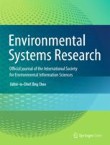Assessment of urban groundwater quality using Piper trilinear and multivariate techniques: a case study in the Abuja, North-central, Nigeria
Groundwater pollution ensuing from ion exchange, weathering, agricultural and anthropogenic activities is on the rise in Nigeria. Since groundwater is used for domestic purposes, there is need for routine inve...
